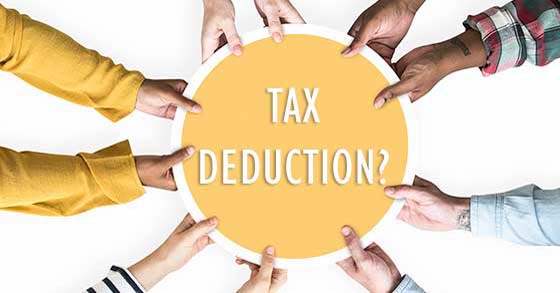
Volunteering for Charity: Do You Get a Tax Break?
If you’re a volunteer who works for charity, you may be entitled to some tax breaks if you itemize deductions on your tax return. Unfortunately, they may not amount to as much as you think your generosity is worth.
Because donations to charity of cash or property generally are tax deductible for itemizers, it may seem like donations of something more valuable for many people— their time— would also be deductible. However, no tax deduction is allowed for the value of time you spend volunteering or the services you perform for a charitable organization.
It doesn’t natter if the services you provide require significant skills and experience, such as construction, which a charity would have to pay dearly for it went out and obtained itself. You still don’t get to deduct the value of your time.
However, you potentially can deduct out-of- pocket costs associated with your volunteer work.
The Basic Rules
As with any charitable donation, to be able to deduct your volunteer expenses, the first requirement is that the organization be qualified charity. You can check by using the IRS’s “Tax Exempt Organization Search” tool at https://www.irs.gov/charities-non-profits/tax-exempt-organization-search.
If the charity is qualified, you may be able to deduct out-of-pocket costs that are not reimbursed; directly connected with the services you’re providing; incurred only because of your charitable work; and not “personal, living or family” expenses.
Expenses that May Qualify
A wide variety of expenses can qualify for the deduction. For example, supplies you use in the activity may be deductible. And the cost of a uniform you must wear during the activity may also be deductible (if it’s required and not something you’d wear when not volunteering).
Transportation costs to and from the volunteer activity generally are deductible— either the actual expenses (such as gas costs) or 14 cents per charitable mile driven. The cost of entertaining other (such as potential contributors) on behalf of a charity may also be deductible. However, the cost of your own entertainment or meal isn’t deductible.
Deductions are permitted for away-from-home travel expenses while performing services for a charity. This includes out-of-pocket round-trip expenses, taxi fares and other costs of transportation between the airport or station and hotel, plus lodging and meals. However, these expenses aren’t deductible if there’s a significant element of personal pleasure associated with the travel, or it your services for a charity involve lobbying activities.
Recordkeeping is Important
The IRS may challenge charitable deductions for out-of-pocket costs, so it’s important to keep careful records and receipts. You must meet the other requirements for charitable donations. For example, no charitable deduction is allowed for a contribution of $250 or more unless you substantiate the contribution with a written acknowledgement from the organization. The acknowledgment generally must include the amount of cash, a description of any property contributed, and whether you got anything in return for your contribution.
And, in order to get a charitable deduction, you must itemize. Under the Tax Cuts and Jobs Act, fewer people are itemizing because the law significantly increased the standard deduction amounts. So even if you have expenses from volunteering that qualify for a deduction, you may not get any tax benefit if you don’t have enough itemized deductions.
If you have questions about charitable deductions and volunteer expenses, please feel free to contact your DDK tax advisor.
